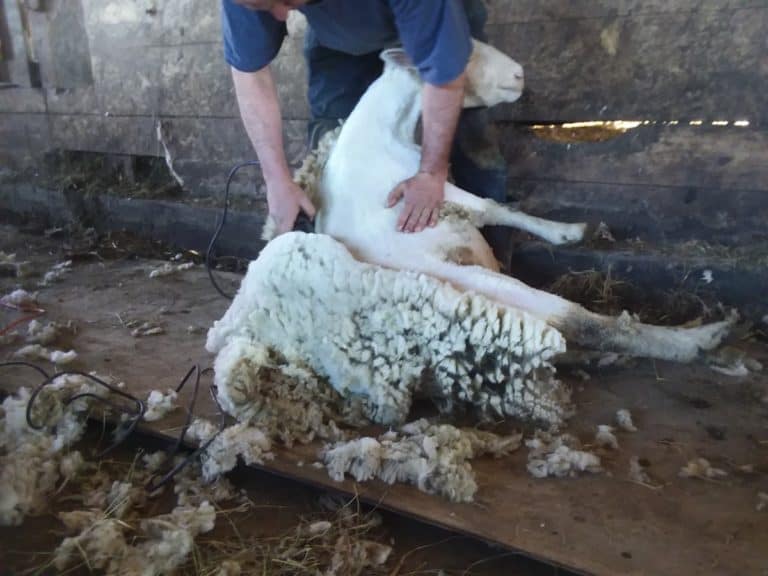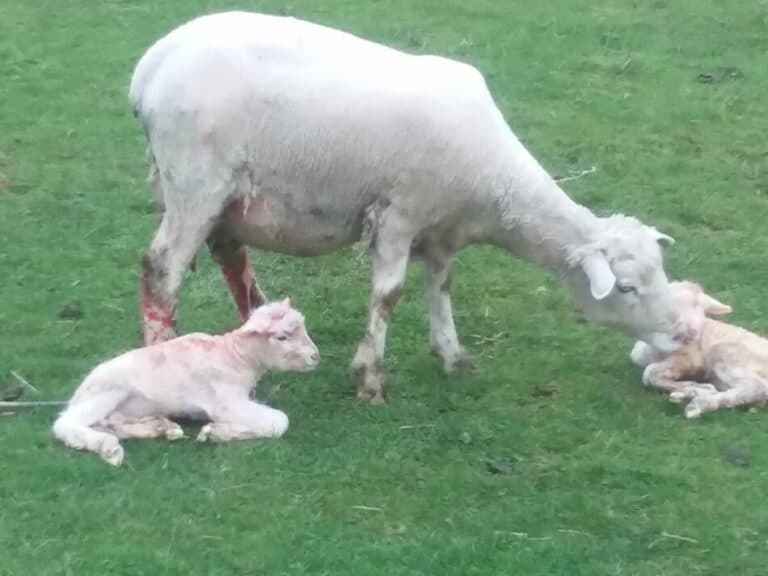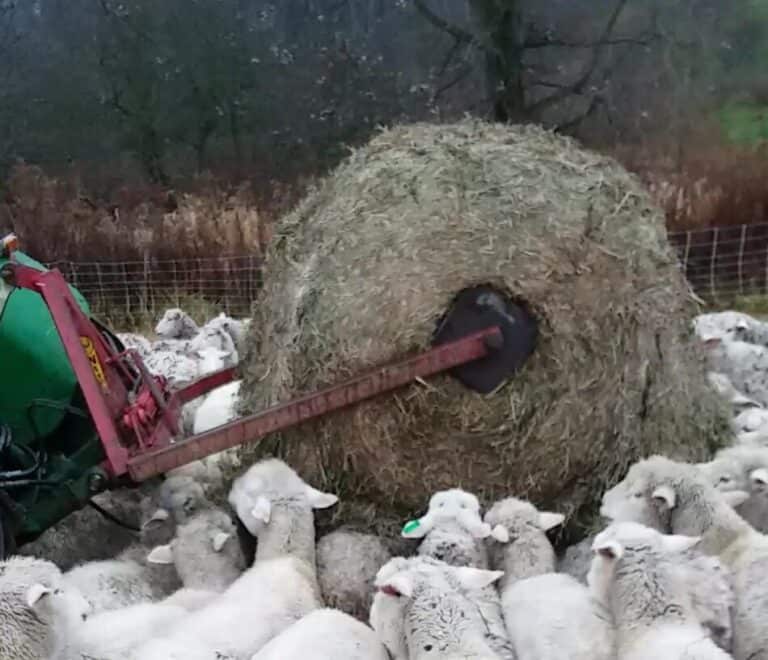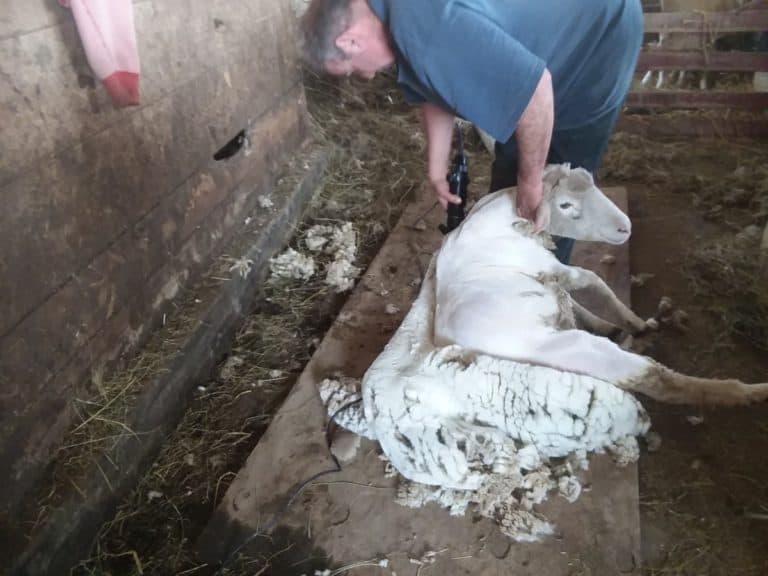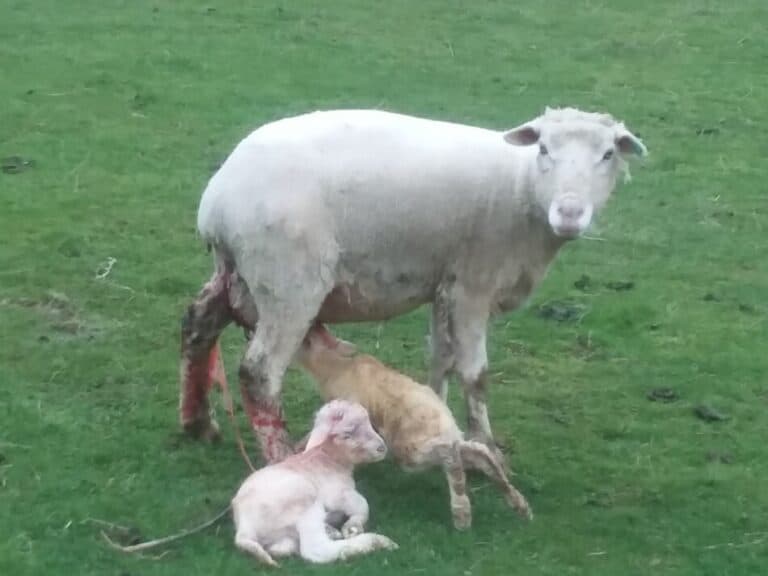Do All Sheep Naturally Have Long Tails?
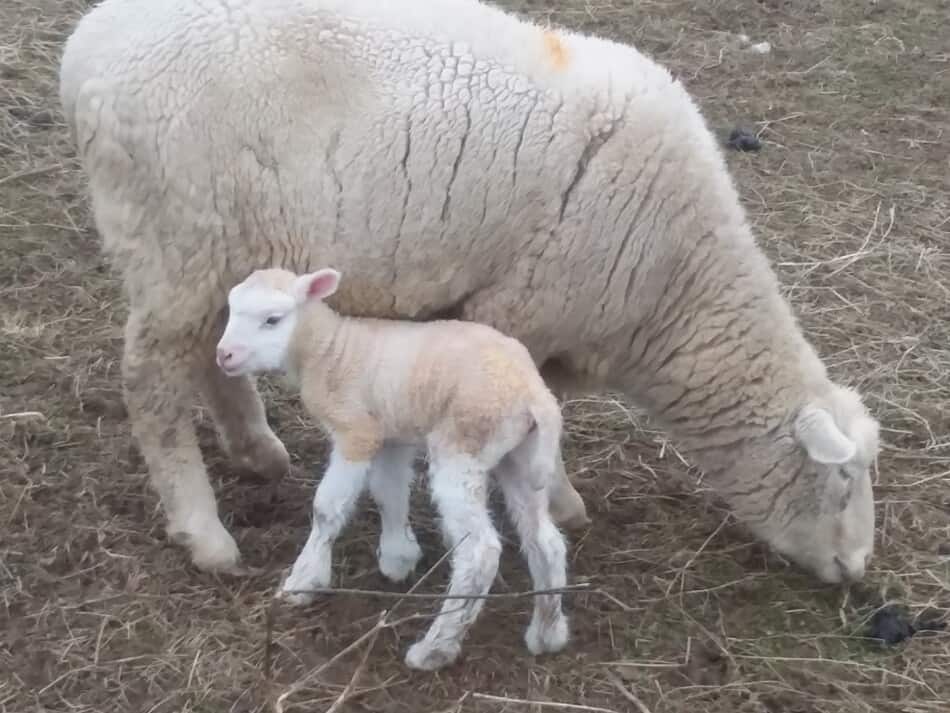
When looking at a flock of sheep grazing in the pasture, some have long tails, yet on some other flocks, those sheep do not have any tails to speak of? To add the mix, other sheep seem to have little shorty tails.
What’s going on with those tails?
Many, but not all, breeds of sheep have long tails that have been preferentially selected for since sheep have been domesticated. Certain breeds of sheep naturally have very short tails and other sheep with short tails were born with longer tails that were docked.
Sheep can naturally have long tails or short tails
All sheep are born with some sort of a tail. The length of the tail depends upon the breed, with wool sheep tending to have longer tails and sheep from Northern Europe having naturally shorter tails or thin, wool less tails called rat tails.
Sheep 101: Tails is the place to go if you want a more in depth look at which breeds tend to have what type of tail.
If the sheep is a cross bred, it will have a tail that is mid way between what the ewe’s tail and the ram’s tail look like.
If both parents are long tailed sheep of different breeds, the lambs will still have long tails. The same goes for short or rat tailed sheep of different breeds, the lambs will still have the type of tail that their parents have.
If one of the parents has a short tail and the other a long tail, the tail of the lamb could be long or short, it depends on how the genetics of the parents line up in the lambs.
Are Sheep Easy To Keep? gives you the things you need to keep in mind if you are considering getting started with sheep.
We have a few naturally short tailed sheep born every year, but it is less common than the longer tailed lambs, when the parents have different tail lengths.
Breeds of sheep born with long tails include: Merino, Polypay, Dorset, Suffolk and Hampshire to name a very few. Most of the common (and not so common) wool breeds would have long tails.
Breeds of sheep born with short or “rat” tails include: Finn sheep, East Friesian, Soay and Shetland.
Where Do Sheep Sleep? gives you the scoop on where sheep go to feel safe at night.
There are different types of tails in sheep
As mentioned above there are both short and long tailed lambs born every year. These are the two most common types of tails that you’ll find in lambs.
The other type of tail that is not overly common in our part of the world is the fat tailed sheep.
Fat tailed sheep store fat under the tail, just like a camel stores fat in it’s hump. Fat tailed sheep are popular around the world, just not in my area. Those Fat Tails is an article about the use of tail fat in Middle Eastern cooking.
Some sheep have fat or broad rumps and/or tails. These kind of sheep comprise 25 percent of the world’s sheep population. They are hardy and adaptable, able to survive the tough challenges of desert life and other extreme climatic conditions.
Sheep 101: Tails
Visit Sheep 101: Tails if you would like to see some pictures of fat tailed sheep.
Breeding tailless sheep was attempted but abandoned
You may be thinking, if people can select for tails, why can’t we select for no tails? That would make sense, but for some reason no tail genetics don’t work out.
Breeding sheep with naturally docked tails was attempted and abandoned.
The problem was that the no tail genes were tied to other lethal gene combinations, so the lambs could be bred to not have tails, but it really didn’t matter since the a large portion of the tailless lambs died in utero (before they were born).
This is similar to the problems faced in Manx cats, high loss of kittens during gestation and big problems with many of the kittens once they are born. Here’s an article on Manx Syndrome if you want to learn more about tailless genes.

Many farmers dock sheep with long tails
Docking tails means to intentionally cut the tail in order to permanently shorten it. Many farmers with long tailed sheep choose to dock tails to ward off health problems later in life.
Docking can be done with a knife, elastrator bands (small green elastic bands), a docking iron or an emasculator. Elastrator bands take time to work, the other methods are immediate.
The shortened tail does not accumulate manure, like a long fluffy tail does, usually in the spring when the grass is lush and the sheep manure is naturally more runny. A common happening for sheep raised in humid areas.
The problem with a poopy tail is flies. Not just any flies, blowflies.
A blowfly infestation on an animal is called “flystrike”. If you are unfamiliar, search the term “flystrike” and see what a blowfly infestation can do. Warning: those pictures will be graphic, be prepared.
Flystrike is one of the more disturbing things we deal with as shepherds. In the U.K. there is a pour on to prevent flystrike, here we do not have any preventatives, other than management, just sprays to use once the sheep is infested.
Beginner Friendly Sheep Breeds gives you our recommendations for sheep breeds if you are just getting into sheep.
Hair sheep generally do not have docked tails
Hair sheep are a bit of a different category here, with regards to tails. Since hair sheep have hair, not wool, the hair does not hold the poo the way wool does.
Hair sheep can have short tails, like St. Croix, or longer tails like Katahdins, but because the tail is hair, not wool there is no need to dock tails for the purpose of flystrike prevention.
Undocked tails require more management of the flock
Raising sheep with naturally longer tails and choosing not to dock the tails will require more intensive management of the sheep by the shepherd. Specifically, during fly season.
Docking tails is not required to raise lambs, but it does lessen the likelihood of poopy butts looking overly attractive to blowflies.
Summary
In summary, most sheep that you are used to seeing, if you are not in the Middle East, are going to be sheep that were born with long tails and have had their tails docked.
If you are in the Middle East, most sheep you see will be of the fat tailed type, simply because the tail fat is the main cooking fat of the area.
There are a few exceptions, like the Finn or St. Croix, which would have short tails, but overall, long tails are the norm in most sheep today outside of the Middle East.
The Welfare Of Docking And Castrating Lambs by the Maryland Small Ruminant Page
